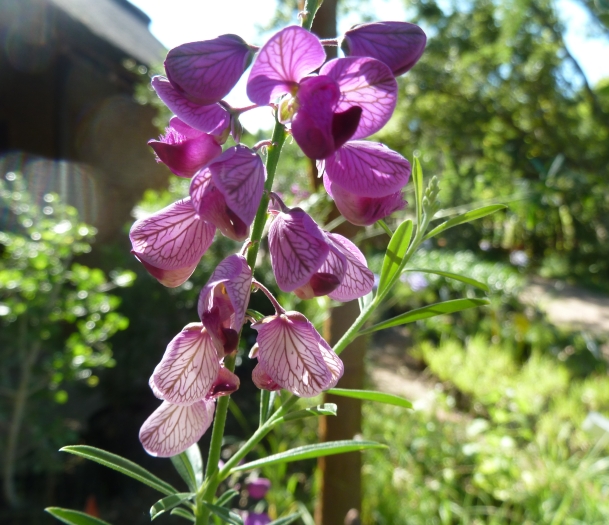Purple Broom
(Polygala lancifolia)
Purple Broom (Polygala lancifolia)
/
/

JMK
CC BY-SA 3.0
Image By:
JMK
Recorded By:
Copyright:
CC BY-SA 3.0
Copyright Notice:
Photo by: JMK | License Type: CC BY-SA 3.0 | License URL: https://creativecommons.org/licenses/by-sa/2.0 | Uploader: JMK | Publisher: Wikimedia Commons |

Estimated Native Range
Summary
Polygala lancifolia, commonly known as Purple Broom, is an evergreen shrub native to the open woodlands and scrublands of South America. It typically grows to a height and width of 4-6 feet (1.2-1.8 meters). The plant is characterized by its lance-shaped leaves and dense, bushy form. It produces vibrant purple flowers throughout the spring, summer, and fall, which are highly attractive to pollinators. The flowers are showy and add a splash of color to the landscape during their blooming seasons.
Purple Broom is valued for its long flowering period and its ability to attract butterflies and other pollinators. It is often used in ornamental plantings, borders, and as a feature in butterfly gardens. This shrub is relatively easy to maintain, requiring minimal pruning. It prefers full sun exposure to thrive and requires regular watering, especially during dry periods. While it tolerates a range of soil types, it performs best in well-drained soils. There are no major disease or pest issues associated with Polygala lancifolia, making it a resilient choice for gardeners. However, it is not tolerant of frost, so in colder climates, it should be grown in containers that can be moved indoors or provided with protection during the winter months.CC BY-SA 4.0
Purple Broom is valued for its long flowering period and its ability to attract butterflies and other pollinators. It is often used in ornamental plantings, borders, and as a feature in butterfly gardens. This shrub is relatively easy to maintain, requiring minimal pruning. It prefers full sun exposure to thrive and requires regular watering, especially during dry periods. While it tolerates a range of soil types, it performs best in well-drained soils. There are no major disease or pest issues associated with Polygala lancifolia, making it a resilient choice for gardeners. However, it is not tolerant of frost, so in colder climates, it should be grown in containers that can be moved indoors or provided with protection during the winter months.CC BY-SA 4.0
Plant Description
- Plant Type: Shrub
- Height: 4-6 feet
- Width: 4-6 feet
- Growth Rate: Moderate
- Flower Color: Purple
- Flowering Season: Spring, Summer, Fall
- Leaf Retention: Evergreen
Growth Requirements
- Sun: Full Sun
- Water: High
- Drainage: Medium
Common Uses
Bee Garden, Border Plant, Butterfly Garden, Low Maintenance, Showy Flowers
Natural Habitat
native to the open woodlands and scrublands of South America
Other Names
Common Names:
Scientific Names: , Polygala virgata, Polygala lancifolia, Polygala lanceolata, Polygala michelii, Polygala acutifolia,
GBIF Accepted Name: Polygala lancifolia A.St.-Hil.